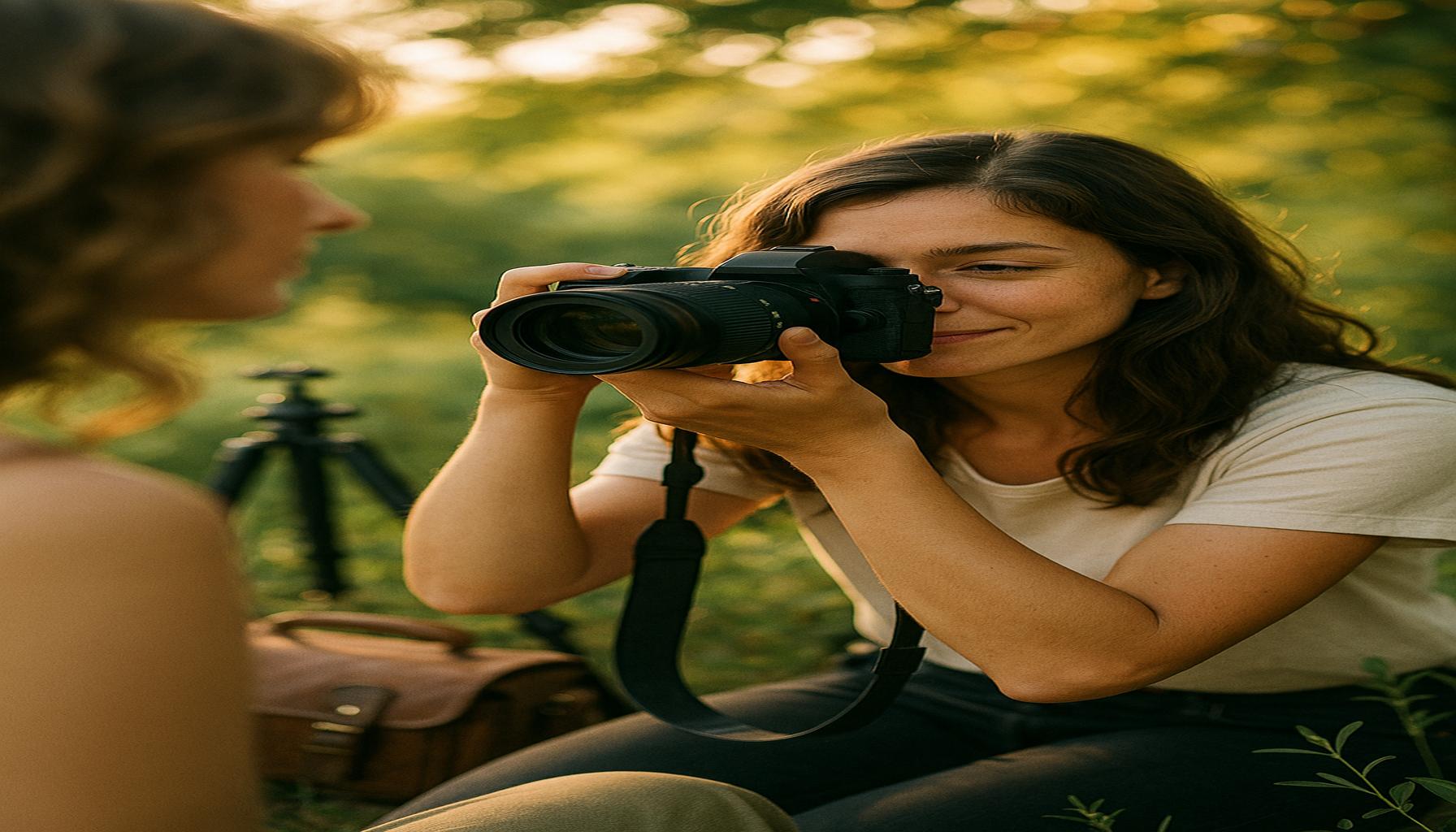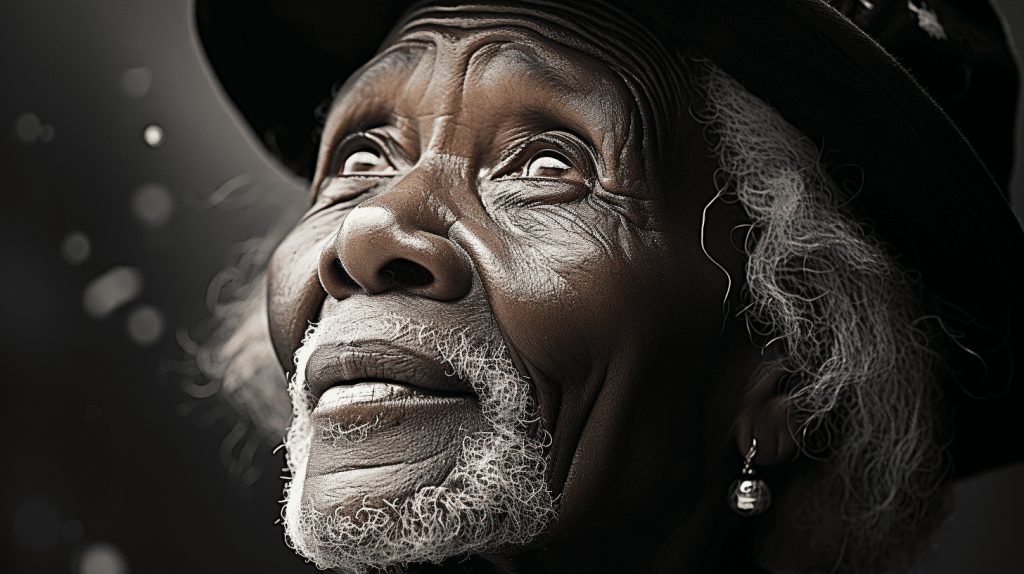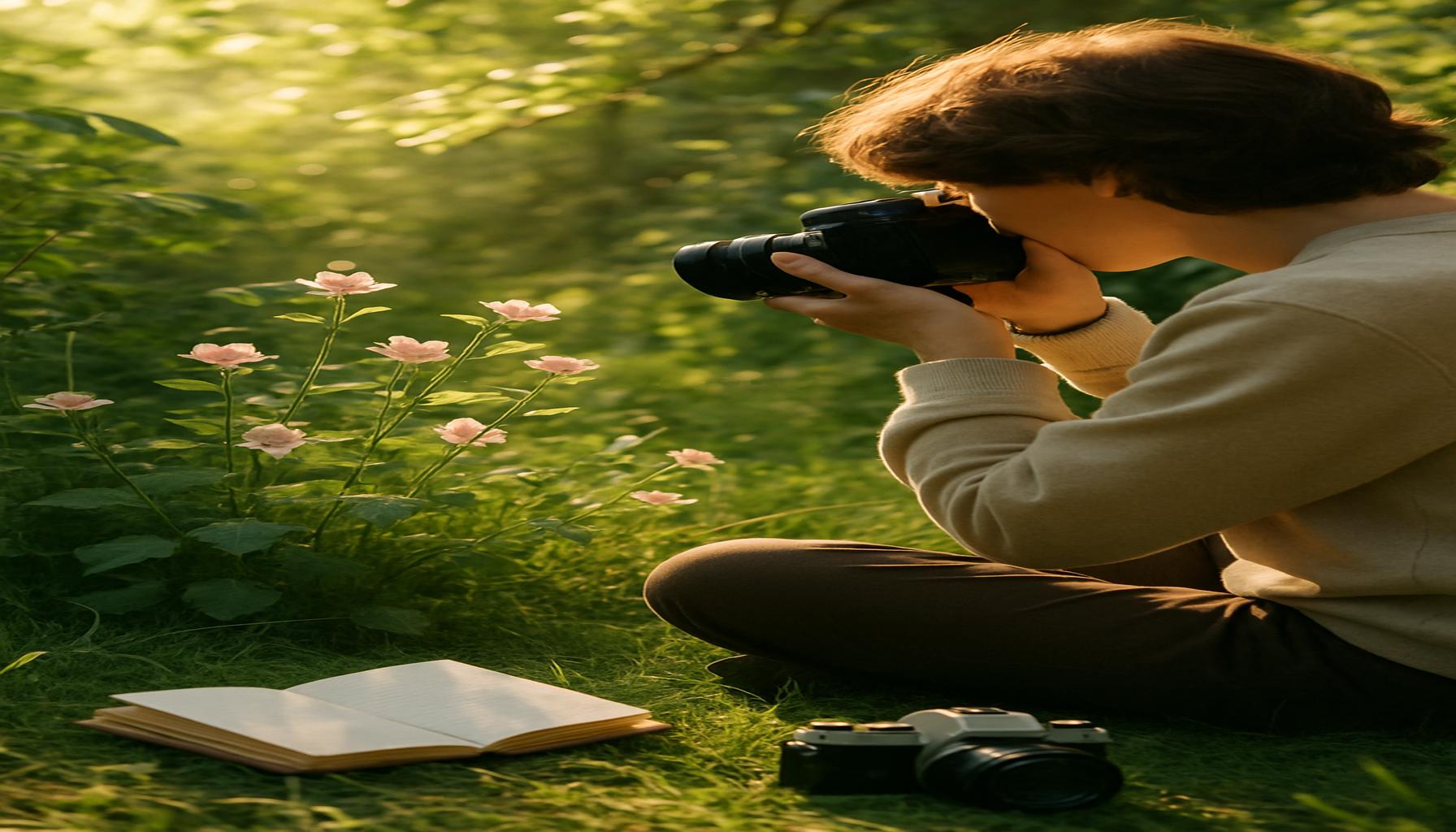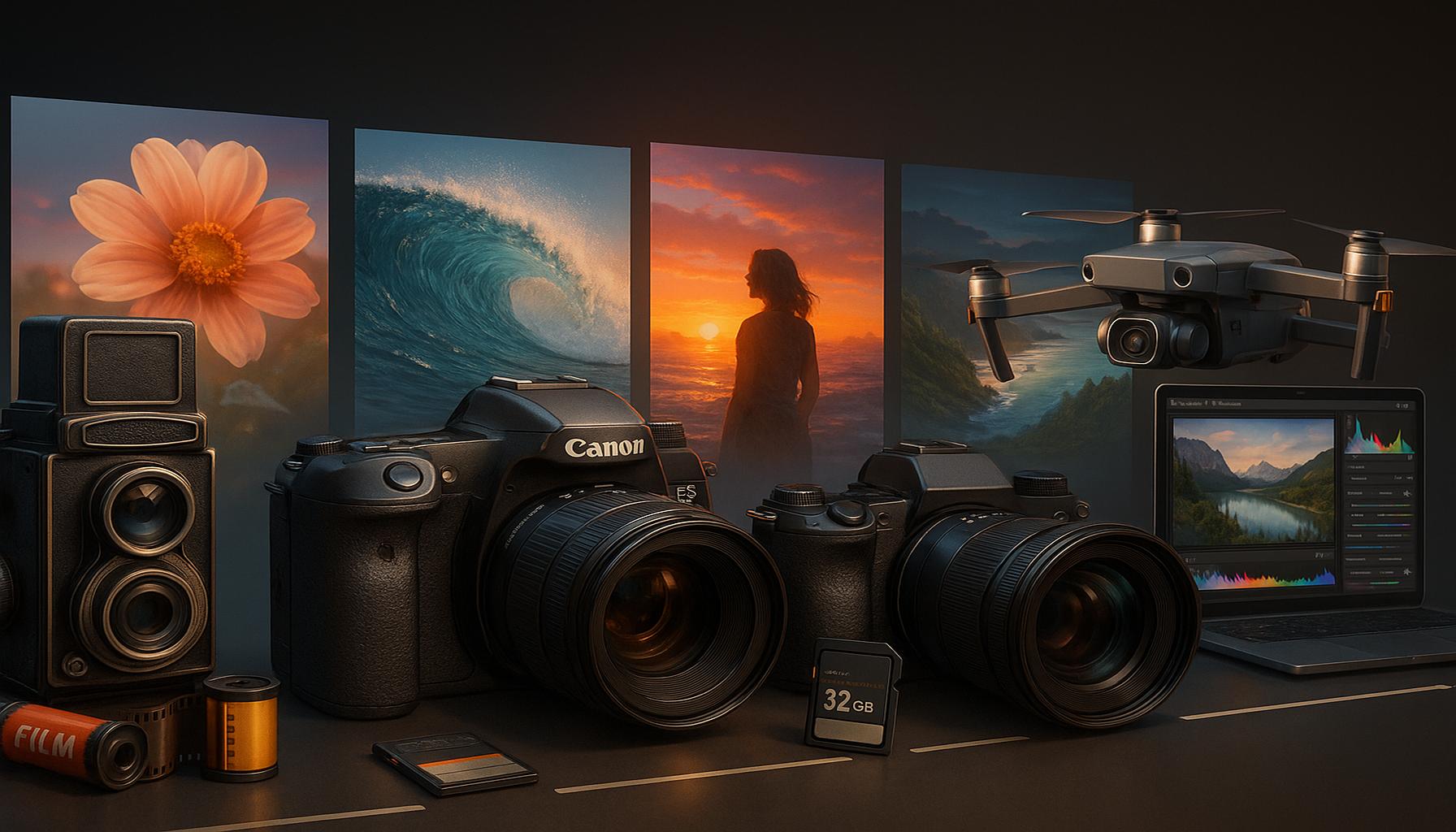Portrait Photography: Tips for Capturing the Essence of Personality in Images

Discovering the Soul Behind the Lens
Portrait photography transcends mere images; it captures the very essence of personality. Every frame tells a story that reflects emotions, thoughts, and unique traits. By mastering certain techniques, photographers can enhance their ability to reveal a person’s character in striking ways. In fact, a well-executed portrait can evoke a response from the viewer that goes beyond what words can express, inviting them to connect with the subject on a deeper level.
Key Elements of Effective Portrait Photography
- Lighting: The importance of lighting in portrait photography cannot be overstated. Utilizing natural light, such as the golden hour just after sunrise or before sunset, can create warm, flattering images that enhance skin tones. For indoor portraits, soft artificial sources like diffused lamps can add a dramatic flair. Experimenting with different lighting setups can bring forth varying moods—bright and airy for cheerful themes or low-light conditions for more dramatic effects.
- Composition: The arrangement of elements within the frame plays a crucial role in how a portrait is perceived. Rule of thirds, leading lines, and framing can draw the viewer’s eye to the subject’s face. Additionally, incorporating intriguing backgrounds that complement the subject allows for a more dynamic photograph. For example, photographing a musician against the backdrop of an urban skyline can convey their narrative vividly.
- Connection: Engaging with the subject before and during the shoot fosters authentic expressions. A relaxed and friendly atmosphere encourages the subject to reveal their true self. Techniques such as asking questions about their passions or interests can lead to natural, candid moments that resonate with viewers, creating a sense of intimacy in the image.
The right approach to these components can elevate your photography skills. Understanding how to evoke genuine emotion transforms a standard portrait into a captivating representation of individuality. Techniques such as utilizing props, backdrops, and angles can significantly enhance your artistic vision. For instance, incorporating personal items, like a favorite book or instrument, can help narrate the subject’s story, making the portrait even more engaging and relatable.
Why Personality Matters
Focusing on personality gives portraits depth and relatability, setting them apart from typical photographs. Viewers can connect with images that reflect real human experiences—joy, sorrow, confidence, or vulnerability. A portrait that captures the laughter of a loved one during a family gathering, for example, can evoke nostalgia and warmth. By employing these strategies, you invite your audience to engage with the story behind each smile or gaze.
Ready to dive deeper? Exploring essential tips that will shape your understanding of portrait photography can guide you toward mesmerizing results, enriching both your skills and your connections with subjects. By continually practicing and experimenting with different techniques, you can unlock the profound stories behind each face you capture, and ultimately discover your unique voice as a portrait photographer.
DIVE DEEPER: Click here to learn more about the power of collaboration

Techniques to Enhance Your Portraits
To truly capture the essence of personality in portrait photography, understanding and employing effective techniques is vital. Successful portraiture not only focuses on the technical aspects but also on the emotional connection between the photographer and the subject. Here are some essential techniques to elevate your portraits and truly reflect your subject’s individuality:
1. Understanding Your Subject
Every person has a unique story that shapes their personality. Before even lifting the camera, take time to understand your subject. Engaging in conversation will help you discover what makes them tick, from their hobbies to their dreams. These insights provide valuable context that can be translated into your portraits. A confident athlete may exude energy, while a thoughtful artist might have a more introspective aura. Tailoring your approach based on these characteristics enriches the portrait by infusing it with personal details.
2. Choosing the Right Location
The location of your shoot can dramatically influence the final image. Selecting a backdrop that resonates with your subject’s personality adds layers to the story you’re telling. For example, a vibrant street art mural can breathe life into the portrait of a musician or dancer. Alternatively, a serene park can create an atmosphere of calm for someone who finds solace in nature. Consider these factors when planning your shoot:
- Relevance: Does the location reflect or enhance your subject’s story?
- Accessibility: Is it easy for your subject to feel comfortable and move around?
- Lighting Conditions: Consider how different times of day affect natural light in your chosen location.
3. Experimenting with Angles
Finding the perfect angle can transform an ordinary portrait into an extraordinary one. Moving around your subject can help you find unique perspectives that might resonate more with their personality. Shooting from a lower angle can convey strength and dominance, while a high angle might impart vulnerability or shyness. Always keep in mind the powerful impact of angles on emotion and storytelling.
4. Utilizing Props Thoughtfully
Props can serve as powerful storytelling tools in portrait photography. A well-chosen prop that reflects the subject’s interests or personality can create a more compelling image. For instance, a chef might be photographed with their favorite kitchen tool, while a writer could be depicted with a pen and paper in a cozy corner. Use props to amplify the visual narrative rather than distract from it. The key is to ensure that the prop is meaningful to the subject, enhancing the overall message of the portrait.
Incorporating these techniques into your portrait photography not only enriches the images you create but also deepens the connection between you and your subject. By focusing on the elements that highlight personality and individuality, you can create stunning portraits that resonate with viewers long after they have seen them. Mastering these techniques serves as a stepping stone to uncovering the deeper stories each face has to tell and elevating your work to new artistic heights.
Exploring Key Techniques in Portrait Photography
In the realm of portrait photography, the capability to capture the essence of a subject extends beyond mere technical skills. It revolves around creating a connection that translates into stunning imagery. Here are some insightful techniques that can enhance your portrait photography experience.
Lighting Techniques
One of the most crucial elements in portrait photography is lighting. Natural light can create a soft, ethereal quality that adds depth to your images. Experimenting with different times of day, particularly during the golden hour, allows you to harness the warm, flattering tones of sunlight. Alternatively, utilizing artificial lighting can enable you to create a controlled environment where shadows and highlights sculpt the features of your subject, bringing their personality to the forefront.
Composing the Shot
Composition plays a significant role in directing the viewer’s eye and setting the overall mood of the portrait. Employing the rule of thirds can create a more dynamic image. Position the subject off-center to draw attention while providing context through the surrounding environment. Additionally, consider using framing techniques, such as doorways or branches, to create layers in your photograph that enhance the narrative quality of the image.
Engaging with Your Subject
Building a rapport with your subject can significantly influence the outcome of your portraits. Taking the time to engage in conversation can help to ease nerves and elicit genuine expressions. Encouraging your subject to express themselves, whether through movement or candid moments, provides an authentic glimpse into their personality, capturing their true essence in the final photograph.
Post-Processing and Enhancements
Post-processing can greatly enhance your images, allowing for adjustments in color grading, contrast, and clarity that reflect the mood you wish to convey. Carefully consider how you edit your portraits to complement the personality of your subject. Subtle enhancements can make a world of difference without overshadowing the natural beauty captured in your images.By mastering these techniques, you will not only improve your portrait photography skills but also enrich the storytelling aspect of your images, capturing the essence of personality in a way that resonates with viewers.
| Technique | Description |
|---|---|
| Lighting | Utilizing natural or artificial light to enhance subject features. |
| Composition | Applying the rule of thirds for dynamic and engaging images. |
| Engagement | Building rapport for authentic expressions and emotional depth. |
| Post-Processing | Enhancing images to reflect the mood while preserving authenticity. |
These fundamental elements ensure that your portrait photography not only captures faces but also conveys the rich stories embedded within each personality.
DIVE DEEPER: Click here to uncover the magic of storytelling
Creating Authentic Emotion in Portraits
In portrait photography, capturing the essence of your subject extends far beyond technical skills; it also involves creating an environment where authentic emotion can flourish. The ability to evoke genuine expressions can turn a simple image into a powerful narrative. Here are some strategies for fostering authentic emotion in your portrait photography:
1. Establishing Rapport
To capture true emotion, it’s essential to build a rapport with your subject. This connection can be facilitated through light-hearted conversation or sharing a bit about yourself, which helps to break down barriers and create a comfortable atmosphere. When subjects feel at ease, they are more likely to let their guard down and reveal their natural selves. Think about incorporating activities that encourage interaction. For instance, having your subject engage in a favorite hobby during the shoot can generate candid moments and genuine expressions.
2. Candid Moments vs. Posed Shots
Candid photography often results in portraits that exude personality. Unlike traditional posed portraits, capturing a moment when your subject is unaware of the camera can reveal their true nature. Whether it’s a laugh shared with a friend or a moment of contemplation while looking out into the distance, these unguarded instances can be more impactful. However, this doesn’t mean abandoning all structure. A balance of some well-thought-out poses combined with candid moments will bring out the nuances of your subject’s personality.
3. Utilizing Natural Light
The use of natural light can significantly affect the mood and emotion conveyed in a portrait. Soft, diffused light can impart warmth and tenderness, while harsher light can create drama and intensity. Consider the time of day when planning your shoot; the “golden hour” just after sunrise or before sunset provides optimal lighting conditions for flattering portraits. This light not only highlights facial features beautifully but also enhances the emotional tone of the image. Experimenting with different lighting setups can help you find the best look that complements your subject’s character.
4. Focusing on the Eyes
Often regarded as the “windows to the soul,” the eyes play a critical role in conveying emotion in portraits. Ensure that your composition keeps the eyes sharp and in focus, as they often attract the viewer’s attention first. Encourage your subject to express emotion through their eyes by featuring various emotions, such as joy, confidence, or contemplation. You can also create a sense of intimacy in your shot by composing the portrait so that the eyes are directly engaging the viewer, drawing them into the subject’s story.
5. Post-Processing Techniques
In today’s digital age, post-processing can take your portraits to the next level and refine the emotion captured during the shoot. Subtle adjustments in exposure, contrast, and color levels can enhance the overall feel of the photograph. Additionally, consider utilizing black-and-white editing to highlight emotions or expressions more profoundly. This technique reduces distractions and emphasizes the subject’s character, allowing viewers to connect on a deeper level.
By harnessing these approaches, you can forge a powerful bond with your subject and capture the heartfelt emotions that reflect their true personality. The more you dive into the nuances of emotional expression, the better equipped you become to transform simple portraits into timeless masterpieces.
DIVE DEEPER: Click here to uncover watercolor techniques
Final Thoughts on Portrait Photography
In the realm of portrait photography, the ultimate goal is to encapsulate the essence of a person’s personality within a single frame. By fostering an environment of trust and understanding, you open the door to capturing authentic emotions that breathe life into your images. Establishing rapport with your subjects is crucial; it serves as the foundation upon which dynamic interactions and candid moments can thrive. Embracing both posed and unguarded shots allows you to create a rich tapestry of visual stories, each reveal a different facet of your subject’s character.
Lighting choices also play a pivotal role in shaping the atmosphere of your portraits. The interplay of natural light can elevate an image from the ordinary to the extraordinary, underscoring the mood and feelings you wish to convey. Additionally, by focusing on your subject’s eyes, you tap into a powerful narrative tool—inviting your audience to connect with the subject on a deeper emotional level.
Finally, post-processing techniques allow for further refinement, emphasizing the raw emotions captured during the shoot. Utilizing these strategies will not only enhance your photographic skills but will also help you to create portraits that resonate and linger in the minds of viewers.
As you embark on your portrait photography journey, remember that it is a craft that evolves over time. Embrace experimentation, draw inspiration from various sources, and most importantly, let your unique vision shine through. The world is ready to see the stories your lens can tell.



